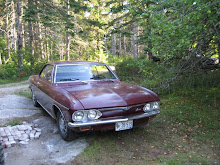I spent a very happy day lying underneath and over the QE I. Bluntly, if you don't enjoy working on a classic Land Rover yourself, you'll need a dedicated mechanic and some extra funds to use and enjoy the car.
Land Rovers don't require maintenance because they're finicky; it's because their maintenance schedules were created at a time when people drove less [6,000/yr was considered average in the UK in the 1960's] and because Rover knew the car would likely see use in remote areas, far from service facilities. Land Rovers were [and are] exported to well over 100 countries, but in really small numbers [<25,000-30,000 per year]
When you flip through a Land Rover shop manual of the time, you realize that the instructions assume that the reader might not be familiar with Land Rovers and might not have specialized tools. That certainly resonates with me today.
To create a vehicle that will last for a long time, Land Rover made most parts adjustable, fully lubricated and robust. The maintenance schedule calls for attention most often in 3,000 mile intervals -except in "severe uses." That's most of the time, as it turns out.
The basics are easy enough - oil and filter changes at 3,000 or 3 months. whichever comes first. The Land Rover 2.25 liter engine requires nearly 8 quarts of oil with every change. That alone helps longevity. The oil filter is a large cartridge type with a big paper filter inside a cannister - messy but effective. The air cleaner is also the old oil-bath type [that requires a quart of its own] that really keeps air contaminants at bay. With its large radiator and high oil sump capacity, the Land Rover engine can run at optimal temperatures with ease; the oil helps cool as well as lubricate the internal moving parts. The compression ratio is low at 7:1 or 8:1, depending on which cylinder head is on the engine, and that, too, keeps the heat down.
As you might expect, the transmission and transfer case, front and rear axle housings, all have fill plugs and drain plugs that make it easy to add and/or change the gear oil within them. The rear axles are "floating axles" that are bathed in gear oil and easy to replace if broken. The same gear oil lubricates the wheel bearings, too.
Land Rover also used an enclosed globe in which to house the front end "ball joints." As long as you check the gear oil within them, you'll not likely have front end failures, either. The overdrive has its own hypoid reservoir, too, as does the steering box. There aren't that many grease points, and they're confined to the front and rear propshafts.
I used the opportunity to tighten up bolts on the exhaust and spring hangers. Then I decided to check the valve clearances as it had been a couple of years since I'd tested them last. A couple were loose and one was a bit tight, but overall, they were in good shape. While I found it a bit tiring to crawl under and lean over the car all day, it felt good when it ran well at day's end.
Oh, yes, after yet another broken shift lever earlier this week, I finally adjusted out the slave cylinder rod to see if I could ease pressure on the lever. A new one should come soon from Rovers North and I'll carry it with me just in case.
So now the Land Rover is ready for a 600 mile round trip next week.
Subscribe to:
Post Comments (Atom)








No comments:
Post a Comment